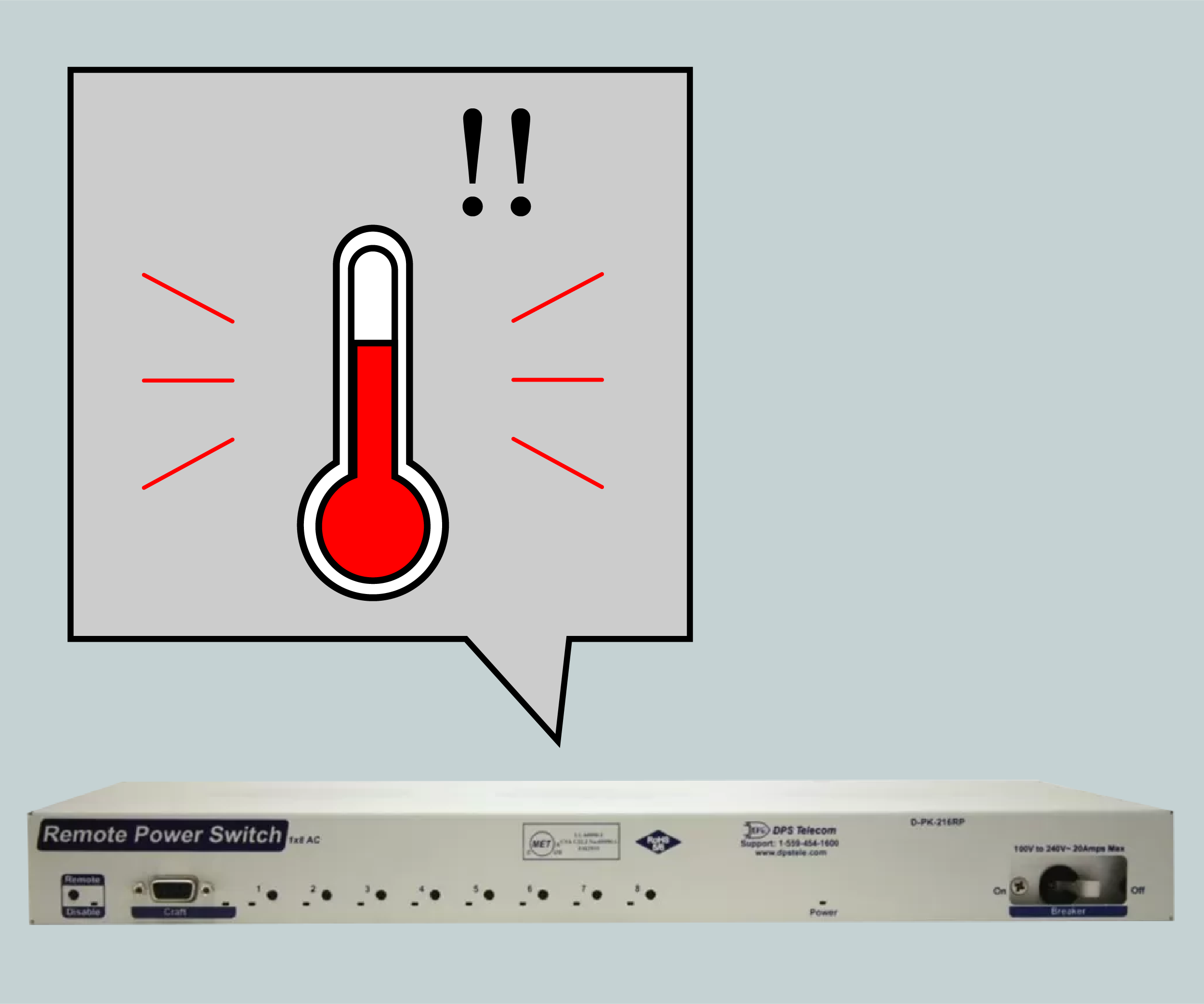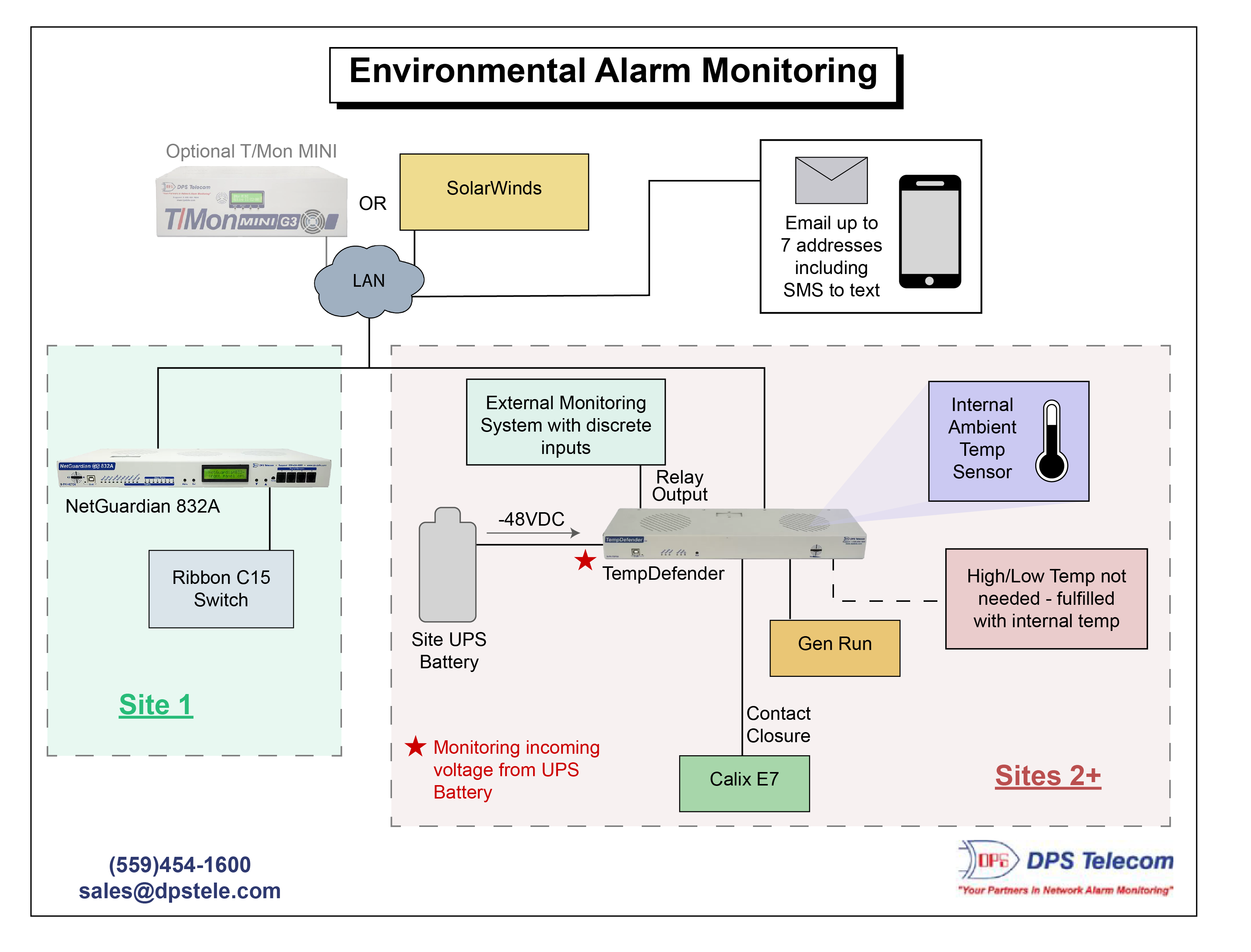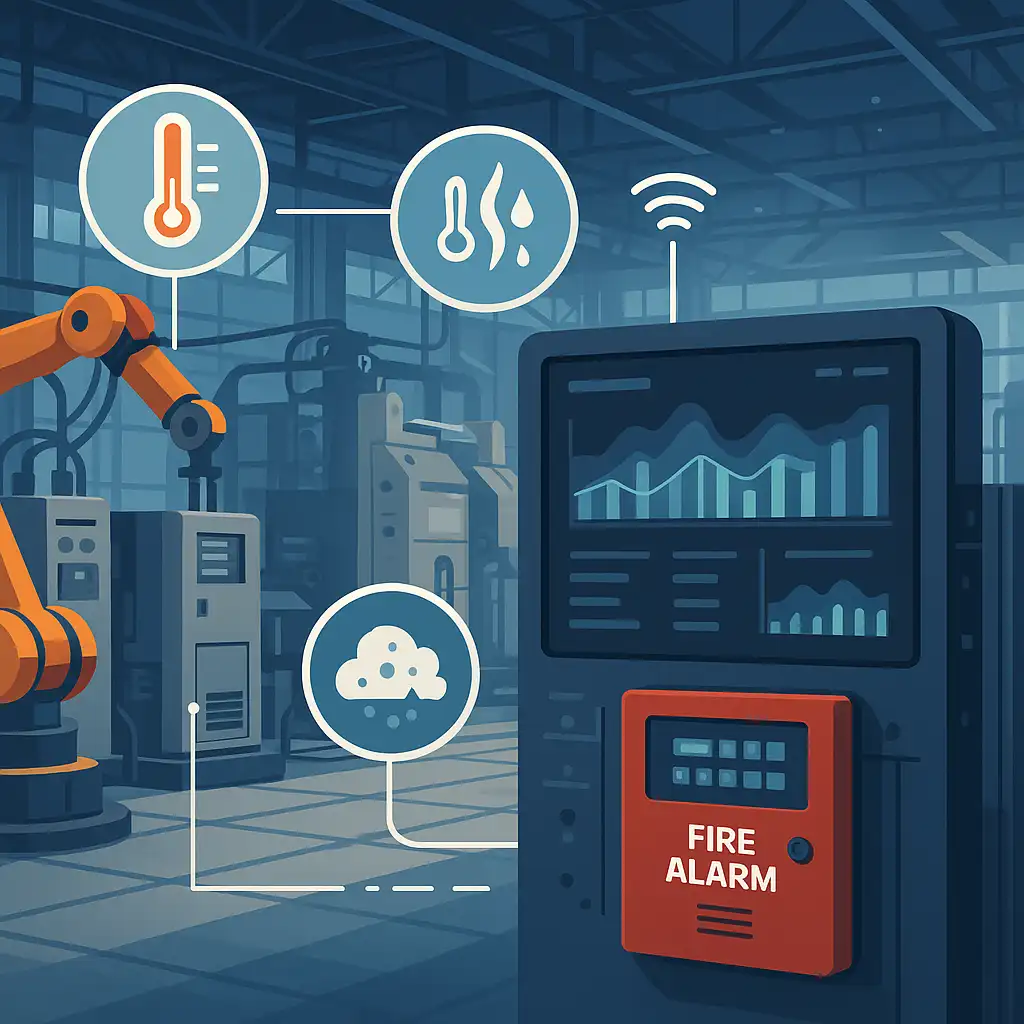Check out our White Paper Series!
A complete library of helpful advice and survival guides for every aspect of system monitoring and control.
1-800-693-0351
Have a specific question? Ask our team of expert engineers and get a specific answer!
Sign up for the next DPS Factory Training!

Whether you're new to our equipment or you've used it for years, DPS factory training is the best way to get more from your monitoring.
Reserve Your Seat TodayNetwork uptime is important across many industries - regardless of whether you're managing a telecom network, utility infrastructure, or data centers.
Environmental factors like temperature fluctuations and power failures can pose serious risks to your remote sites. If you're not monitoring these conditions, you might only learn about a problem after it has already caused costly downtime and frustrated your users or customers.
That's not how you want to run a mission-critical network. Luckily, there are better ways to handle these outages.
In this blog, we'll discuss:
After reading, you'll be able to confidently track environmental conditions at your sites to avoid expensive incidents.

Imagine you manage multiple remote telecom sites, and one suddenly loses power due to a UPS battery failure. Your current system provides no real-time alerts. By the time you discover the issue, your customers have already suffered through a major service outage.
This is the worst-case scenario for any network operator. Environmental conditions - such as power failures, temperature spikes, or generator malfunctions - often cause serious disruptions. Without a good monitoring system, you end up discovering problems long after they've already (negatively!) impacted your operations.
A proactive alarm monitoring strategy not only allows you to, but also helps you to spot these issues before they take your network offline.
When network failures happen, the cost of downtime can be devastating. No matter your industry, every minute of downtime means lost revenue, unhappy customers, and potential SLA violations.
A strong, proactive environmental monitoring system makes sure that you're not just reacting to failures, but preventing them in the first place. By setting up automated alerts for temperature fluctuations, power failures, and generator issues, you can quickly address problems before they derail your operations.
To build an effective environmental monitoring strategy, start by identifying the biggest threats to your infrastructure - such as temperature extremes, humidity, power disruptions, and water leaks.
Place sensors strategically in these critical areas to ensure full coverage of potential risk points. Regularly reviewing system logs and accumulated trend data can also help you spot patterns and prevent issues before they escalate.
A strong environmental monitoring system should provide real-time data, remote access, and customizable alerting. It must integrate smoothly with your existing network and support multiple notification methods - such as emails, text messages, and SNMP traps. These alerts make sure you never miss a critical warning.
The best systems also feature built-in redundancy and backup power options, so monitoring continues even during an outage.
By installing a well-designed monitoring solution, you gain peace of mind knowing that potential threats are detected and addressed before they impact your operations. This not only reduces downtime costs but also helps maintain compliance, protect assets, and improve overall network reliability.
DPS Telecom manufactures equipment designed to provide real-time alerts and proactive oversight across multiple remote sites. The gear can integrate with your existing network monitoring tools, allowing you to track power status, temperature, and other critical conditions - all from a central interface.

With DPS Telecom, you can monitor countless sites from a single location. For strong data reporting, you can equip each remote location with an RTU (Remote Telemetry Unit) - like a NetGuardian 832A or TempDefender - that reports alarms over LAN or WAN.
In the example diagram, you'll notice:
Each site sends data to a central alarm master - either T/Mon MINI (a DPS Telecom master) or a third-party platform like SolarWinds. These master stations process the incoming alarms and generate notifications in real time. Two masters - even if from different manufacturers - can be used together to create redundancy in your system.
When a problem occurs, you can't afford delays in response. Dependable systems like the one pictured above send instant alerts via email and SMS to up to seven recipients simultaneously. This allows you to have:
If there's a power failure, overheating, or generator malfunction, you'll know right away.
Many remote monitoring systems require external temperature sensors. However, TempDefender RTUs feature internal ambient temperature sensors, eliminating the cost and complexity of extra hardware. With the TempDefender's internal temperature sensor, you can:
Power failures are one of the biggest threats to remote infrastructure. If your UPS batteries fail or lose charge, your site can go offline during a commercial powerful failure.
Monitoring solutions - like NetGuardian RTUs - track incoming voltage from UPS batteries. If voltage levels drop, you'll receive an early warning. This gives you time to send a fuel truck for your generator or, longer term, replace failing batteries before they cause a full-blown outage.
NetGuardian RTUs:
Your backup generator is a lifeline during power outages - but only if it starts when needed. Without visibility, you won't know there's a generator problem until it's too late.
The TempDefender and NetGuardian RTUs include contact closure monitoring for generator run status. Newer models also include MODBUS/SNMP alarm processing. If your generator fails to start (or runs when it shouldn't), you'll get an immediate alert.
Pro Tip: Regularly test your generator and monitor it 24/7 to be sure it's always prepared to step in during an emergency.
The Internet of Things (IoT) has transformed how companies monitor their remote sites. Devices like the TempDefender and NetGuardian RTUs are essentially IoT sensors - collecting real-time environmental data and transmitting it securely over your network.
DPS Telecom's solutions are designed to support these IoT-driven features so you can leverage the latest technology.
No two sites are identical. Some sites only need basic temperature monitoring, while others require sophisticated power tracking, generator status updates, and security monitoring. With DPS Telecom, you're never stuck with a one-size-fits-all solution. Our equipment allows you to:
This flexibility allows you to design a system tailored to your specific requirements. Even if these abilities don't meet your exact needs, we're happy to work closely with you to design a semi-custom solution that fits perfectly. Just let us know what you're trying to accomplish.

Setting up an environmental monitoring system doesn't have to be complicated. With the right approach, you can get up and running quickly.
Need help? DPS Telecom offers free consultations to make sure your deployment goes smoothly.
Environmental threats can bring your operations to a grinding halt. Luckily, you can stop these issues before they impact your bottom line (and your customers).
With DPS Telecom's Environmental Alarm Monitoring System, you'll have:
Contact DPS Telecom for a free consultation to find out how you can improve uptime and reliability at your remote sites:
Your network deserves the best protection. Let DPS Telecom help you monitor (and conquer) the environmental challenges at your remote sites today.
Stay proactive, stay protected, and keep your network online.

Andrew Erickson
Andrew Erickson is an Application Engineer at DPS Telecom, a manufacturer of semi-custom remote alarm monitoring systems based in Fresno, California. Andrew brings more than 18 years of experience building site monitoring solutions, developing intuitive user interfaces and documentation, and opt...